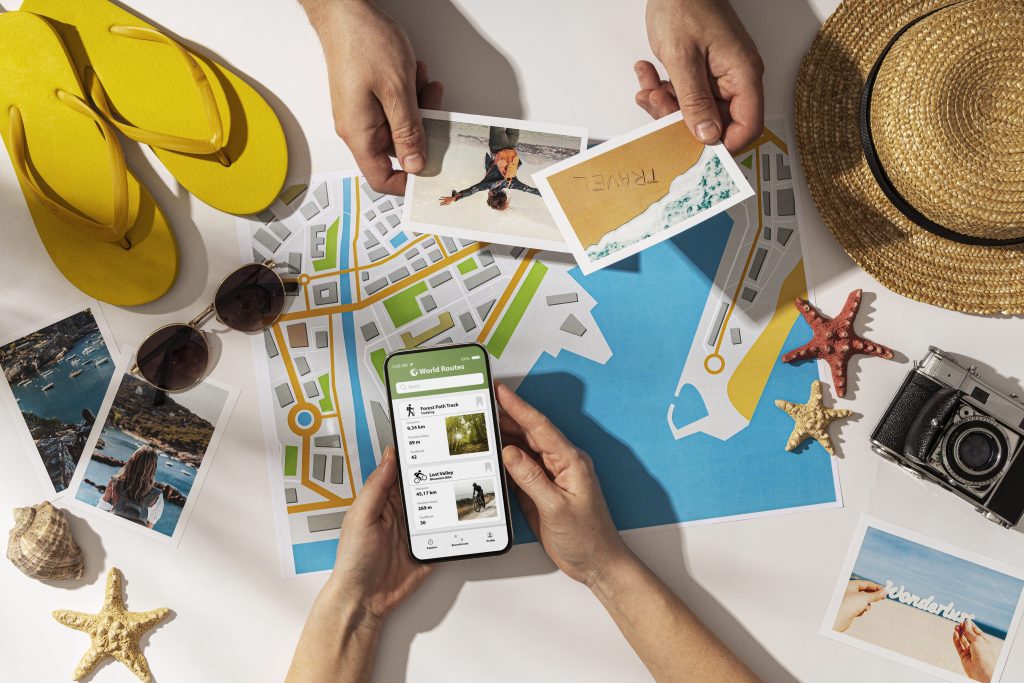
The Sri Lankan tourism industry holds immense potential as a key economic driver, boasting a wealth of natural beauty, rich cultural heritage, and a vibrant history. However, the digital age demands a dynamic shift in how tourism businesses connect with global travelers. Digital marketing offers innovative solutions to help the Sri Lankan tourism sector thrive in an increasingly competitive global market. By leveraging tools such as search engine optimization (SEO), social media marketing, content creation, and data analytics, tourism operators can effectively attract and engage travelers from around the world. This blog delves into the importance of digital marketing for the tourism industry in Sri Lanka and explores practical strategies to enhance online visibility, boost bookings, and deliver exceptional travel experiences.
Importance of Digital Marketing in Sri Lanka’s Tourism Industry
Digital marketing is not just an optional add-on but a cornerstone for growth in the tourism industry. Today’s travelers rely heavily on online platforms for research, planning, and booking, making a strong digital presence essential.
Key Reasons Why Digital Marketing is Crucial:
- Global Reach: With tools like Google Ads and social media platforms, Sri Lankan tourism businesses can reach international markets, promoting destinations like Ella, Anuradhapura, and Galle to a global audience.
- Real-Time Communication: Platforms like Twitter and Facebook allow instant updates on events, seasonal offers, or weather conditions at popular tourist spots.
- Cost-Effective Advertising: A well-targeted digital ad costs significantly less than a traditional TV or print campaign but often yields better returns.
For example:
- A luxury hotel in Kandy could target honeymooners in Europe by promoting its private suites with scenic views through Facebook ads.
- A budget-friendly tour operator can use Google Ads to reach students in neighboring countries, offering affordable Sri Lankan travel packages.
Leveraging Social Media for Tourism Promotion
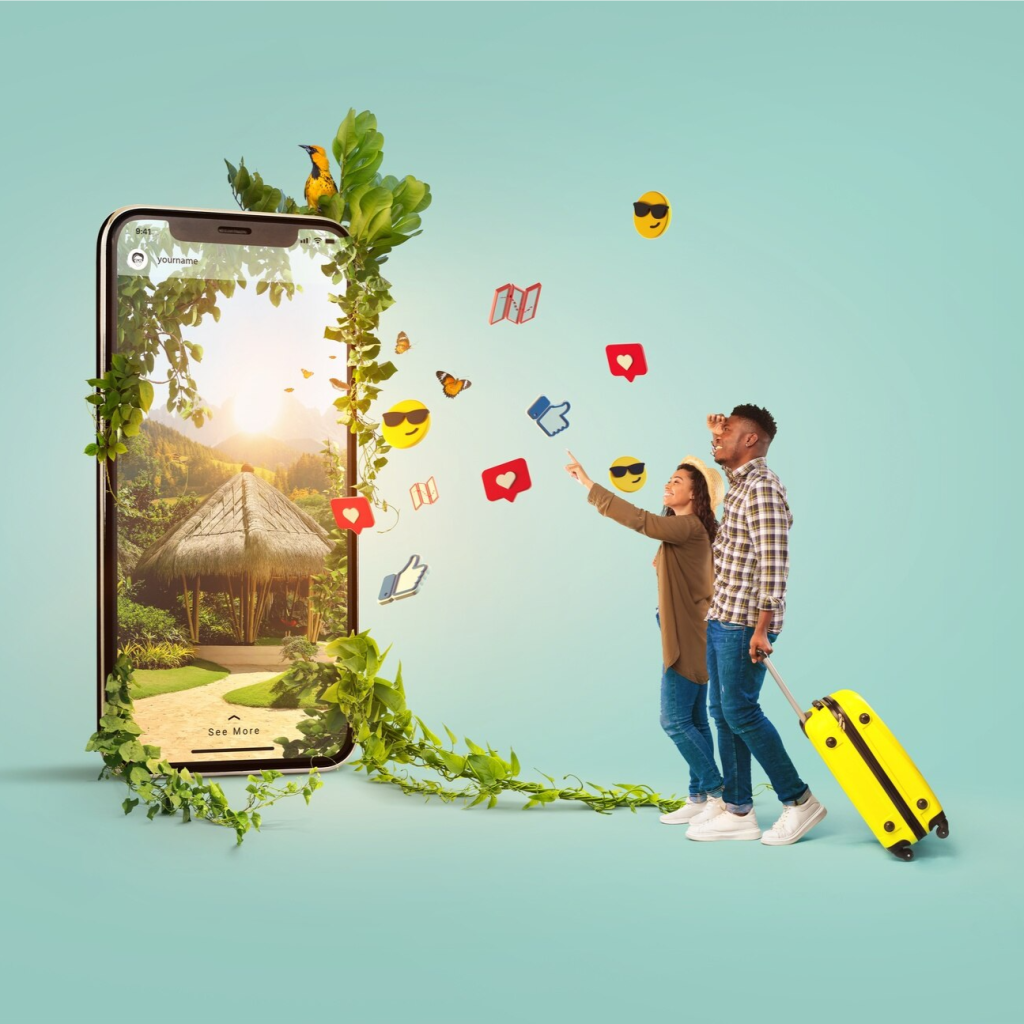
Social media platforms have become essential tools for promoting Sri Lanka as a must-visit travel destination. These platforms allow businesses to showcase the country’s unique offerings, interact with potential travelers, and build a loyal online community. The visual and interactive nature of platforms like Instagram, Facebook, and TikTok aligns perfectly with the tourism industry, where captivating visuals and engaging stories play a pivotal role in influencing decisions.
How Social Media Transforms Tourism Marketing
Social media transforms traditional tourism marketing by enabling real-time engagement and allowing businesses to create a dynamic online presence. For example, a single post showing the sunrise over Adam’s Peak or a short video of dolphins off the coast of Kalpitiya can inspire thousands of travelers worldwide to consider Sri Lanka as their next destination.
Practical Strategies for Social Media Campaigns
1. Showcase Authentic Experiences
Visual content is king when it comes to tourism promotion. High-quality photos, drone footage, and short videos highlighting unique experiences can create a strong emotional connection with viewers.
- Example: A video featuring a family enjoying a traditional Sri Lankan meal in a local village can attract cultural travelers.

- Example: Instagram stories showing the vibrant Kandy Esala Perahera parade can generate excitement among cultural enthusiasts.
2. Leverage User-Generated Content (UGC)
Encourage travelers to share their photos, videos, and testimonials on their social media accounts using branded hashtags. UGC is not only cost-effective but also highly credible, as it showcases real experiences from real people.
- Example Hashtags: #ExploreSriLanka, #CeylonAdventures, or #IslandParadise.
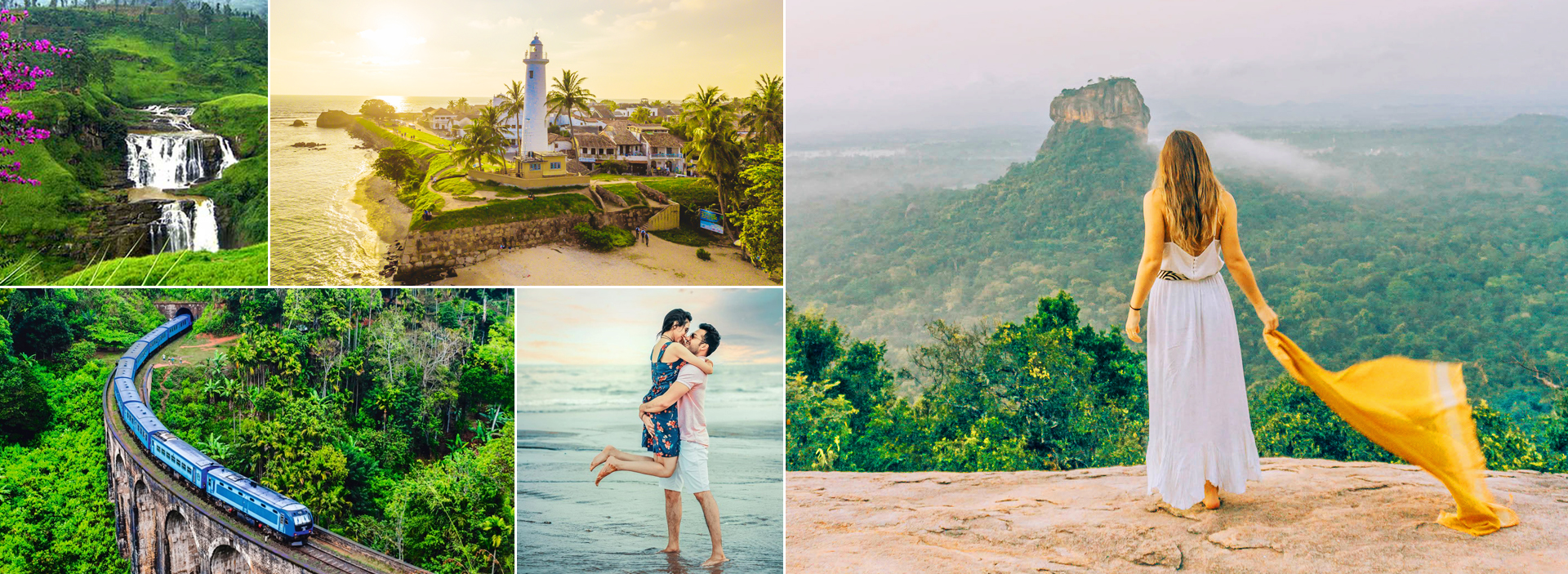
Repost traveler content on your business page to build trust and showcase diverse experiences.
3. Collaborate with Influencers
Partnering with travel influencers and bloggers who have a strong following can amplify your reach. Influencers can create engaging content, such as vlogs of their experiences or detailed itineraries, which resonates with their audience.
- Example: A YouTube travel vlogger can document their trip to the ancient city of Polonnaruwa or their safari experience in Yala National Park.
- Example: Instagram influencers can showcase luxury stays at boutique hotels in Galle, paired with personalized spa treatments.
4.Run Contests and Giveaways
Social media contests and giveaways are excellent tools for boosting engagement and encouraging followers to share your content.
- Example: A contest asking participants to share their favorite Sri Lankan travel moment could reward winners with a free stay at a beach resort in Trincomalee or a guided tour of Ella’s attractions.
5. Highlight Sustainable Tourism Initiatives
Socially conscious travel is gaining popularity, and promoting your sustainability efforts can resonate well with eco-conscious travelers. Use platforms to show how your business supports local communities or adopts eco-friendly practices.
- Example: Share posts about turtle conservation programs in Bentota or village homestays that support rural livelihoods.

6. Use Stories, Reels, and Live Sessions
Platforms like Instagram and Facebook allow you to connect in real-time through features such as Stories, Reels, and Live videos.
- Example: Conduct live Q&A sessions with local tour guides, showcasing hidden gems of Sri Lanka.
- Example: Create Reels highlighting thrilling activities like white-water rafting in Kitulgala or hot-air ballooning over Sigiriya.

Real-Life Example Campaigns in Sri Lanka
- Cultural Tourism Campaign:
A social media series called “Heritage in Focus,” showcasing UNESCO World Heritage Sites in Sri Lanka like Dambulla Cave Temple and Galle Fort. - Adventure Tourism Campaign:
“Thrill Seekers of Sri Lanka” campaign highlighting activities such as hiking in Horton Plains, diving in Hikkaduwa, and surfing in Arugam Bay. - Eco-Tourism Campaign:
“Green Trails of Sri Lanka” promoting eco-lodges, organic farms, and wildlife safaris with a focus on sustainability.
Benefits of Social Media for Sri Lankan Tourism
Social media provides transformative opportunities for Sri Lanka’s tourism industry by leveraging its unique features to engage audiences and promote the country’s rich cultural, natural, and historical attractions.
Social media acts as a window through which travelers from all corners of the globe can discover Sri Lanka’s unparalleled beauty. Platforms like Instagram, Facebook, and YouTube allow tourism stakeholders to showcase the country’s iconic destinations and hidden gems. High-quality visuals and engaging content ensure that Sri Lanka stays on the radar of travelers seeking unique experiences.
- Example 1: Instagram posts featuring the lush greenery of Ella’s tea plantations or the golden sands of Arugam Bay can captivate adventure and leisure travelers alike.
- Example 2: Facebook campaigns targeted at European winter travelers can highlight the sunny beaches of Unawatuna and Bentota, encouraging bookings during their colder months.
Additionally, hashtags like #SriLankaTravel and #ParadiseIsland can amplify content visibility, ensuring it reaches a broader audience interested in tropical vacations, cultural exploration, and adventure tourism.
One of the most significant advantages of social media is the ability to engage with potential tourists in real time. Prompt communication fosters trust and improves customer satisfaction, which is critical for the tourism sector. Travelers often have questions about accommodation, travel restrictions, or itineraries, and being available to address their concerns quickly can turn queries into bookings.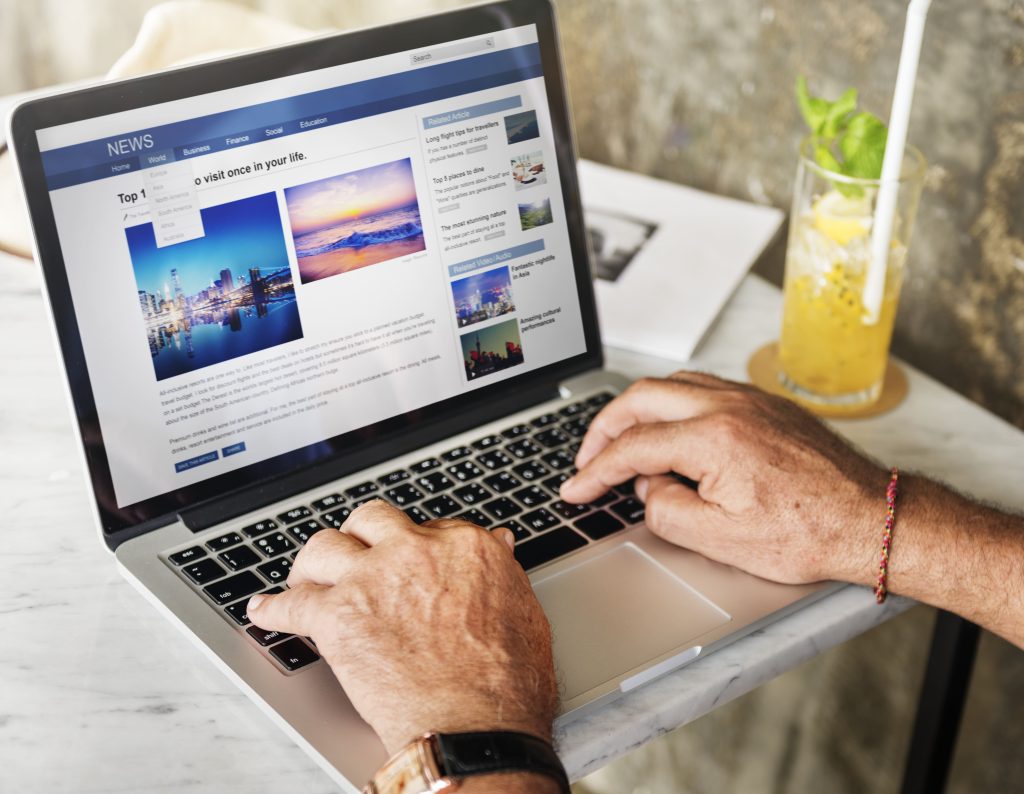
- Examples of Real-Time Interaction:
- Instant Replies: A traveler might inquire about the availability of eco-lodges in Udawalawe National Park through a Facebook message. A timely response can seal the deal.
- Live Updates: Tour operators can share updates about weather conditions, event cancellations, or promotional offers through Twitter or Instagram Stories.
Real-time interactions also help address negative feedback promptly. For instance, if a tourist shares a less-than-ideal experience on social media, a proactive response offering a resolution can protect the brand’s reputation.
Social media platforms offer highly efficient advertising tools that allow businesses to reach their target audience without exceeding their budget. Traditional advertising channels like TV or print media are often expensive and less targeted, while platforms like Facebook and Instagram allow tourism businesses to tailor their campaigns based on demographics, interests, and behaviors.
- Targeted Campaigns:
- A campaign promoting Ayurvedic wellness retreats in Sri Lanka can be directed toward health-conscious individuals aged 30-50 in Europe and Asia.
- Instagram Reels showing thrilling water sports in Kalpitiya can be targeted at adventure-seekers in their 20s and 30s.
Moreover, analytics provided by these platforms help businesses track their performance, ensuring that every dollar spent contributes to achieving marketing goals. This level of cost-effectiveness is especially beneficial for small and medium-sized tourism operators looking to maximize their ROI.
Social media fosters a sense of connection between brands and travelers. By engaging followers through personalized content, user-generated posts, and interactive features, tourism businesses can build long-term loyalty. This approach humanizes the brand, making it more relatable and trustworthy.
- Examples of Community Building:
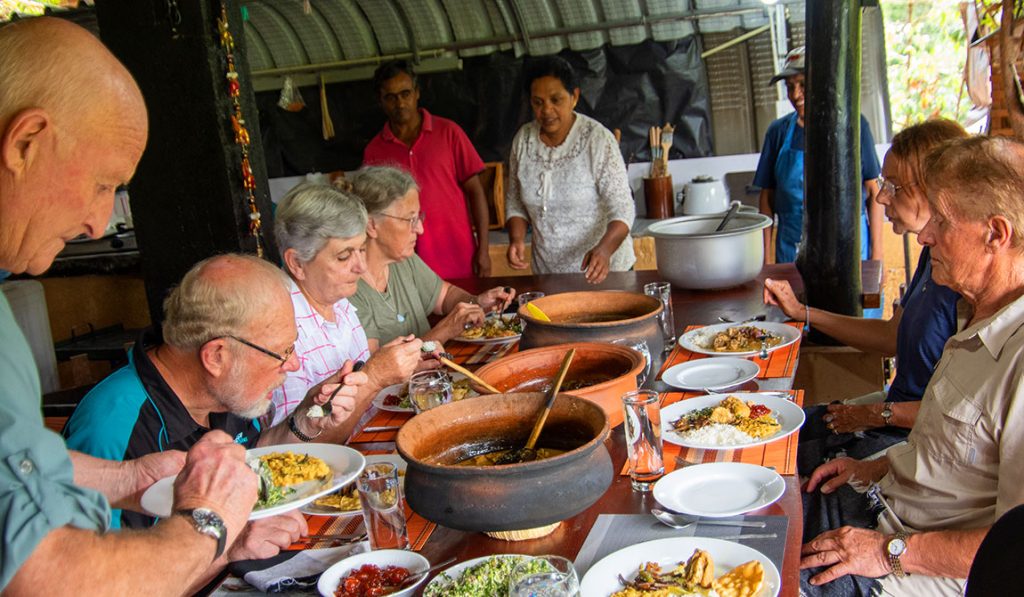
- Sharing user-generated content, such as photos of travelers enjoying local dishes or exploring UNESCO World Heritage Sites like Galle Fort, creates a sense of community and authenticity.
- Organizing contests, such as “Share Your Sri Lanka Adventure,” where participants can win free stays or tours, encourages engagement and increases brand awareness.
Engaging directly with followers through comments, likes, and shares helps maintain a positive relationship. This not only ensures repeat customers but also turns satisfied travelers into brand ambassadors who recommend Sri Lanka as a must-visit destination.
Search Engine Optimization (SEO) and Content Marketing
Search Engine Optimization (SEO) and content marketing are powerful tools for enhancing Sri Lanka’s tourism industry’s digital presence. SEO ensures that websites, blogs, and online platforms rank higher on search engines like Google, making it easier for travelers to find information about Sri Lanka’s attractions, accommodations, and activities. For instance, optimizing keywords like “best beaches in Sri Lanka,” “cultural tours in Sri Lanka,” and “eco-friendly resorts in Ella” can drive organic traffic to tourism websites. Complementing SEO, content marketing involves creating high-quality, engaging, and informative content, such as blog posts, travel guides, and video tours, that highlight Sri Lanka’s unique offerings. This combination helps build trust with potential travelers and establishes Sri Lanka as a must-visit destination. For example, a blog detailing “Top 10 Waterfalls to Visit in Sri Lanka” or a YouTube series on “Exploring Sri Lanka’s Wildlife” can attract niche audiences interested in nature and adventure. By integrating SEO strategies with compelling content, the tourism industry can effectively capture the interest of global travelers, boost bookings, and establish long-term digital relevance.
Using Paid Advertising for Targeted Reach
 Paid advertising is a strategic approach for reaching specific audiences and driving measurable results in Sri Lanka’s tourism industry. Platforms like Google Ads, Facebook, and Instagram enable tourism businesses to create targeted campaigns tailored to demographics, interests, and behaviors, ensuring their message reaches the right audience at the right time. For instance, a travel agency can use Google Ads to display search results for keywords like “Sri Lanka honeymoon packages” or “luxury beach resorts in Sri Lanka,” targeting couples planning romantic getaways. On social media, carousel ads showcasing stunning images of Sigiriya, Yala National Park, and Mirissa’s beaches can attract adventure seekers, wildlife enthusiasts, and leisure travelers. Paid advertising also offers flexibility to promote seasonal offers, such as discounted tours during off-peak months or limited-time packages for festivals like Kandy Esala Perahera. By monitoring ad performance through analytics, businesses can refine their strategies for better engagement and ROI. With its precision, scalability, and ability to amplify visibility, paid advertising is an invaluable tool for elevating Sri Lanka’s appeal to international and local tourists.
Paid advertising is a strategic approach for reaching specific audiences and driving measurable results in Sri Lanka’s tourism industry. Platforms like Google Ads, Facebook, and Instagram enable tourism businesses to create targeted campaigns tailored to demographics, interests, and behaviors, ensuring their message reaches the right audience at the right time. For instance, a travel agency can use Google Ads to display search results for keywords like “Sri Lanka honeymoon packages” or “luxury beach resorts in Sri Lanka,” targeting couples planning romantic getaways. On social media, carousel ads showcasing stunning images of Sigiriya, Yala National Park, and Mirissa’s beaches can attract adventure seekers, wildlife enthusiasts, and leisure travelers. Paid advertising also offers flexibility to promote seasonal offers, such as discounted tours during off-peak months or limited-time packages for festivals like Kandy Esala Perahera. By monitoring ad performance through analytics, businesses can refine their strategies for better engagement and ROI. With its precision, scalability, and ability to amplify visibility, paid advertising is an invaluable tool for elevating Sri Lanka’s appeal to international and local tourists.
Conclusion
The digital revolution has opened unprecedented opportunities for Sri Lanka’s tourism industry to connect with global audiences and highlight its extraordinary offerings. By leveraging tools such as social media, SEO, content marketing, and paid advertising, tourism businesses can create impactful campaigns that showcase the island’s natural beauty, cultural richness, and unique experiences. These strategies not only amplify visibility but also foster meaningful engagement, driving tourist interest and loyalty. With targeted digital approaches, such as real-time interactions on social media and personalized advertising campaigns, Sri Lanka can position itself as a premier travel destination amidst global competition. As travelers increasingly rely on digital platforms to plan their journeys, adopting innovative and data-driven marketing solutions is no longer optional but essential. By investing in these modern techniques, Sri Lanka’s tourism industry can achieve sustainable growth, attract diverse traveler segments, and solidify the country’s reputation as a paradise destination in the global market.
